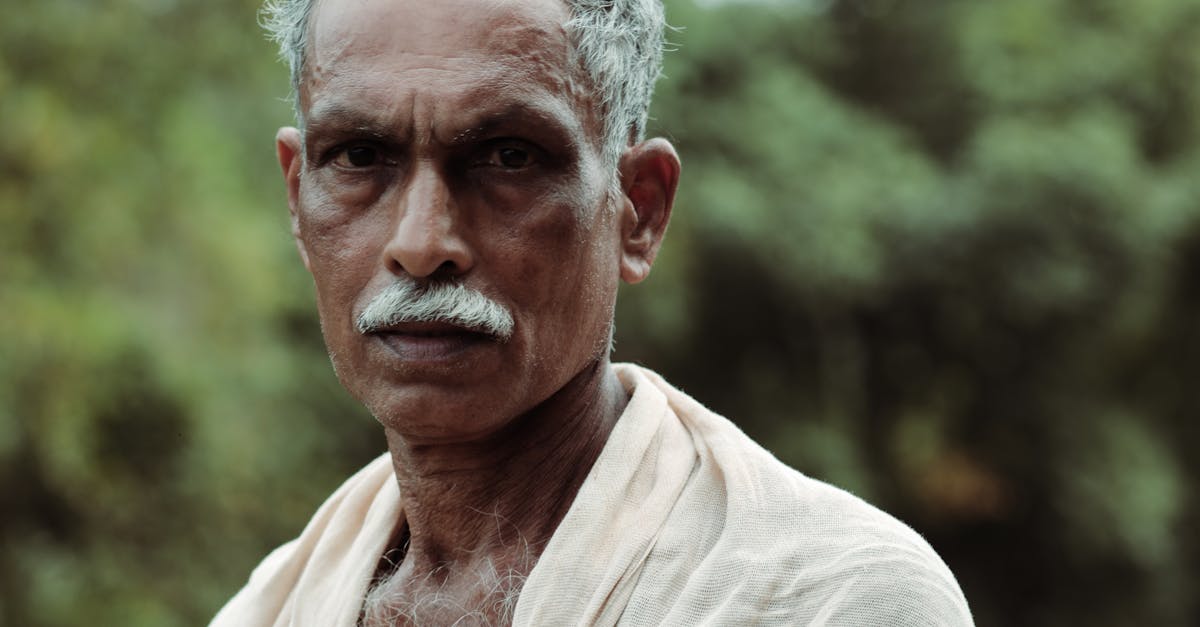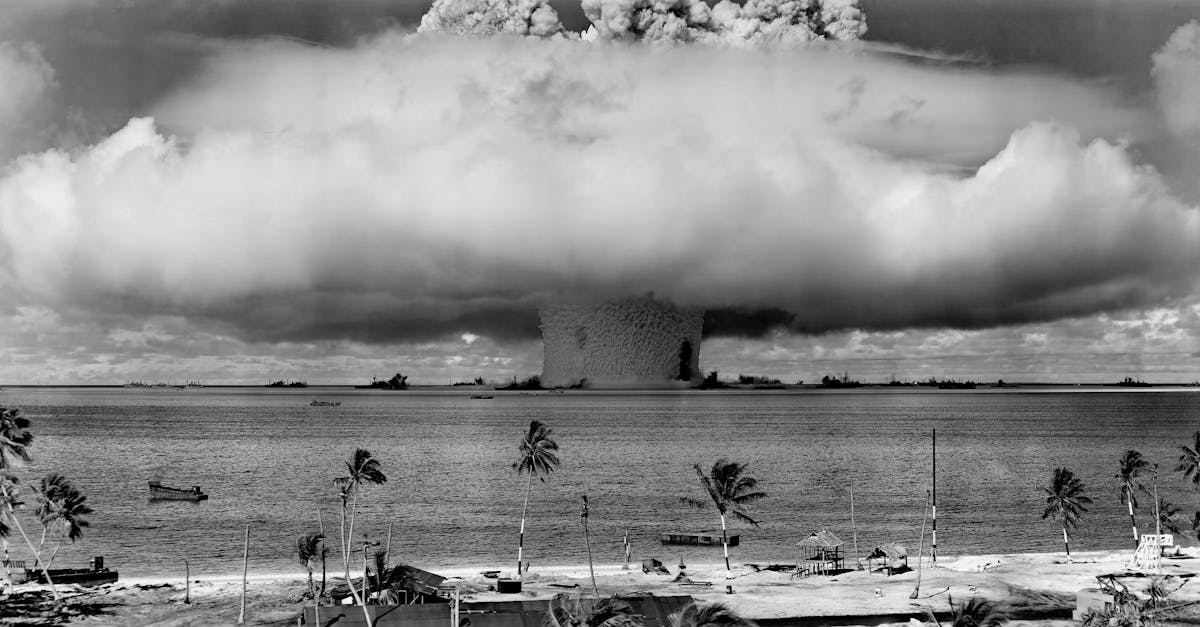India’s Tourism Boost
- Scheme Review & CAG Report Adoption: Ministry of Tourism reviewed Swadesh Darshan (SDS) based on a CAG performance audit, incorporating its recommendations for improvements.
- SDS 2.0 Focus: The revamped SDS 2.0 emphasizes a destination-centric, sustainable tourism approach, aligning with ‘Vocal for Local’ and Aatmanirbhar Bharat. It aims to attract private sector investment.
- Key Improvement Areas: Enhancements focus on institutional strengthening, data-driven destination selection, infrastructure benchmarking, integrating hard and soft interventions, better monitoring, sustainable operations, promotion, and impact assessment.
- Challenge-Based Destination Development (CBDD): This sub-scheme under SD2.0 uses a competitive model for sustainability, digitalization, skill development, MSME support, and efficient management.
- Project Sanctions: 76 projects under SDS, 52 under SDS 2.0, and 36 under CBDD have been sanctioned across various states, focusing on thematic circuits and destination development.
- Tourism Growth Data: The Union Minister shared data on domestic tourist visits and international arrivals, indicating a significant increase in recent years (2022-2024).
- No Direct Impact Study: While projects aim to develop amenities and enhance experiences, no specific study has measured tourist inflow directly resulting from the SDS.
- Financial Management & Implementation: Steps like State Perspective Plans, online project submissions, regular reviews, emphasis on operation and maintenance, and TSA model are being adopted to improve financial management and project implementation.
India’s Nuclear Future
-
Complementary to Renewables: India’s renewable capacity (200 GW) is growing but intermittent. Nuclear energy offers consistent, base-load power crucial for energy security and meeting increasing demand.
-
Ambitious Expansion Plans: India aims for 22,800 MW by 2031-32 and 100 GW by 2047, driven by the “Nuclear Energy Mission (NEM)” for Viksit Bharat.
-
Historical Context & Self-Reliance: India’s nuclear journey began with peaceful intent (TIFR, DAE, BARC). Post-1962 war and 1964 Chinese test, India pursued indigenous technology, refusing NPT and CTBT due to perceived discrimination and focus on disarmament.
-
Nuclear Responsibility: India declared a ‘No-First-Use’ policy and Minimum Nuclear Deterrence post-Pokhran II (1998), establishing the Nuclear Command Authority and Strategic Forces Command.
-
India-US Civil Nuclear Agreement (123 Agreement): This 2005 pact facilitated civil nuclear cooperation, leading to an NSG waiver in 2008. It allowed India to trade nuclear technology and fuel globally, conditional on separating civilian/military programs and IAEA safeguards for civilian reactors.
-
International Integration: Post-waiver, India joined MTCR, Australia Group, and Wassenaar Arrangement, enhancing its role in global export control regimes.
-
Indigenous Capacity & Future Technologies: India operates 24 PHWR reactors (8180 MW). Future plans include developing indigenous PHWRs, Fast Breeder Reactors, and Small Modular Reactors (SMRs) with a Rs 20,000 crore allocation for SMR development.
-
Challenges: Global limitations include non-membership in NSG. Domestic challenges involve the Atomic Energy Act, 1962 (government monopoly) and the Civil Liability for Nuclear Damage Act, 2010 (supplier liability), deterring private and foreign investment.
-
Reforms for Growth: Amendments to nuclear laws are planned to encourage private/foreign participation and align civil liability with global norms, making the sector more investment-friendly.
-
Significance for Sustainability: Nuclear energy supports decarbonization goals, reduces dependence on fossil fuels, and positions India as a leader in sustainable nuclear technology for a cleaner, self-reliant future.
India’s Waterways
-
National Waterway-57 (Kopili River) Operationalised: Maiden cargo of 300 MT cement flagged off in Assam, marking a significant revival of intra-state waterborne freight transport. This is the first cargo movement on NW-57 since 2014.
-
Boost to Assam’s Waterways: With NW-57 operational, four National Waterways in Assam (Brahmaputra NW-2, Barak NW-16, Dhansiri NW-31, Kopili NW-57) are now fully operational, totaling 1168 kms.
-
Alignment with National Visions: This development supports Maritime India Vision 2030 and PM Gati Shakti by strengthening multimodal logistics and promoting economic growth in the Northeast.
-
Eco-friendly and Cost-effective Transport: IWT is highlighted as a low-emission (32-36 g CO₂ per ton-km), cost-effective (Rs 0.25-0.30 per ton-km), and fuel-efficient mode of transport.
-
Logistics and Economic Gains: Operationalising waterways can reduce national logistics costs by up to 5% of GDP and improve global competitiveness. It also promotes tourism and employment.
-
Strategic Connectivity: IWT provides last-mile access to remote areas and enhances national security and disaster resilience.
-
Key Challenges Remain: Issues like seasonal navigability, infrastructure gaps (jetties, terminals), inadequate depth, underutilization (only 3.5% of trade), and siltation need to be addressed.
-
Measures for Improvement: Focus is on integrated infrastructure development, private participation, financial incentives, boosting cargo and passenger movement, and capacity building.

Trade Conflict
- US Imposes 50% Tariff on Indian Imports: US President Trump added a 25% tariff to existing 25% on Indian goods, a move deemed unfair by India.
- Reasoning: Geopolitical Pressure: The tariff isn’t primarily about free trade but uses economic pressure on India for its energy purchases from Russia.
- Economic Impact on India: Could reduce India’s GDP by over 0.5% annually, disrupt supply chains, and negatively impact small exporters.
- India’s Response: India considers the move unfair and plans “necessary actions” to protect its national interests.
- Trade Deficit Concerns: Retaliatory tariffs by India could harm its consumers and potentially widen its trade deficit with the US.
- WTO Context: The World Trade Organization (WTO) governs international trade rules to ensure smooth and predictable trade flows among its 164 members.
- WTO Objectives: Aims to promote free and fair trade, negotiate trade agreements, and settle disputes through a rules-based mechanism.
- Most-Favoured-Nation (MFN) Principle: The WTO principle of non-discrimination, requiring members to treat all other members equally in trade. This US action potentially violates this principle.
- Dispute Settlement Mechanism (DSM) Crisis: The WTO’s dispute resolution system is currently non-functional due to US blockage of judge appointments.
HOPE: ISRO Space Analog
-
ISRO inaugurates HOPE mission at Tso Kar Valley, Ladakh.
- Why in news: To simulate and study challenges of long-duration space missions.
-
HOPE Mission Overview:
- Part of ISRO’s Indian Human Spaceflight Programme.
- Simulates space-like conditions for testing technologies and health protocols for future interplanetary missions (Moon, Mars).
- Aims to study physiological, psychological, and operational challenges.
- Focuses on epigenetic, genomic analysis, health monitoring, and microbial sample techniques.
-
Site Selection – Tso Kar Valley:
- Chosen for its Mars-like environment: high UV radiation, low air pressure, salty frozen ground, cold temperatures (-10°C to 15°C).
- Oxygen levels are 40% of sea level.
- Rocky, sandy soil resembles Martian soil.
-
Mission Objectives & Capabilities:
- Tests life support systems, habitat technology, and rover movement.
- Supports research on In-situ Resource Utilization (ISRU) and astrobiology.
-
Significance:
- Crucial for preparing for crewed missions like Gaganyaan and a lunar landing by 2040.
- Generates vital data, strengthens technological readiness, and improves health protocols.
- Promotes Atmanirbhar (self-reliant) space research through collaboration.
Hep D: Cancer Link
- WHO Reclassifies Hepatitis D as Carcinogenic: This is a significant public health announcement classifying HDV as a cancer-causing agent.
- Why it’s news: Elevates the seriousness of HDV infection and may spur increased global focus, funding, and research.
- Increased Liver Cancer Risk: Hepatitis D co-infection or superinfection with Hepatitis B (HBV) increases the risk of liver cancer by 2 to 6 times compared to HBV alone.
- Why it’s news: Quantifies the amplified danger of HDV, highlighting its potent contribution to liver cancer development.
- HDV Requires HBV for Infection: HDV is a “defective” virus that cannot infect or replicate without the presence of HBV.
- Why it’s news: Explains the unique transmission pathway of HDV and its dependence on HBV, underscoring that only those with HBV are at risk for HDV.
- Accelerated Cirrhosis and Cancer Development: Hepatitis D co-infection with HBV leads to a more severe disease course, with a higher likelihood of cirrhosis and liver cancer. Up to 75% of HDV patients may develop cirrhosis within 15 years.
- Why it’s news: Demonstrates the rapid progression and severity of co-infection, making it a critical concern.
- Transmission Similar to HBV: HDV spreads through parenteral routes (injections, transfusions), mother-to-child transmission, and sexual contact.
- Why it’s news: Informs on how the virus is contracted, reinforcing the importance of existing HBV prevention strategies.
- Prevention Hinges on HBV Vaccination: Universal Hepatitis B vaccination is the primary indirect method to prevent HDV infection.
- Why it’s news: Highlights the critical role of HBV vaccination, especially in India where coverage is only around 50%.
- Diagnosis and Treatment Challenges: Diagnosis relies on HDV-RNA tests, and treatment options are limited, although new drugs show promise.
- Why it’s news: Points to the ongoing challenges in managing HDV, necessitating further development in diagnostics and therapies.
- Indian Context: While low in the general population, HDV may be underestimated in high-risk groups like intravenous drug users and chronic HBV patients in India.
- Why it’s news: Provides specific relevance to India, emphasizing the need for targeted screening and prevention in vulnerable populations.
Swaminathan Centenary
-
PM Inaugurated MS Swaminathan Centenary Conference: Prime Minister Narendra Modi inaugurated the international conference in New Delhi to celebrate the legacy of M.S. Swaminathan, the father of India’s Green Revolution.
-
Theme: Evergreen Revolution: The Pathway to Biohappiness: The conference’s theme focuses on achieving food security, sustainability, and inclusive development, aligning with Swaminathan’s vision.
-
Purpose: The event brings together scientists, policymakers, and development professionals to discuss and advance the principles of the ‘Evergreen Revolution’, emphasizing sustainable agriculture, biodiversity, climate resilience, and inclusive livelihoods.
-
Honoring Swaminathan’s Contributions: The conference highlights Swaminathan’s pivotal role in introducing high-yielding crops, boosting India’s food security, collaborating on wheat production, and pioneering mangrove restoration and sustainable farming.
-
Launch of M.S. Swaminathan Award for Food and Peace: The M.S. Swaminathan Research Foundation and The World Academy of Sciences launched this award to recognize individuals from developing countries who significantly contribute to food security, climate justice, equity, and peace for vulnerable communities. The Prime Minister presented the first award.
-
Swaminathan’s Recognition: He was posthumously awarded the Bharat Ratna in 2024 and recognized by UNEP as the Father of Economic Ecology for integrating agriculture with sustainable ecological practices.
Father of Indian Green Rev
- 100th Birth Anniversary Commemorated: The news focuses on marking the 100th birth anniversary of M. S. Swaminathan, a pivotal figure in Indian agriculture.
- International Conference on Evergreen Revolution: An international conference is being held in New Delhi, inaugurated by PM Narendra Modi, to honor his legacy and advance the principles of the ‘Evergreen Revolution’.
- Pioneer of Food Security & Green Revolution: Swaminathan is recognized for transforming India from a food-deficient to a food-surplus nation through his work on high-yielding crop varieties and package technology.
- Visionary Leadership in Sustainable Agriculture: The conference themes, such as ‘Evergreen Revolution – The Pathway to Bio happiness,’ highlight his focus on sustainable and equitable agricultural development, biodiversity conservation, and rural empowerment.
- MSSRF’s Role: The M. S. Swaminathan Research Foundation (MSSRF) is a key organizer of the conference, carrying forward his commitment to sustainable agriculture and rural welfare.
- Focus on Women and Youth in Agriculture: A significant aim of the conference is to enhance women’s participation in the agricultural sector and promote youth engagement.
- Government Recognition: The government is releasing a commemorative coin and stamp to honor his contributions, underscoring his national significance.
- Impact on Farmers: His work is credited with benefiting millions, with the National Commission on Farmers recommendations, including MSP, being a testament to his farmer-centric approach.

SECI Green Ammonia Auction
-
First Green Ammonia Auction by SECI: Solar Energy Corporation of India (SECI) conducted its inaugural auction to procure Green Ammonia.
- Why: This is a crucial step under the National Green Hydrogen Mission (NGHM) and its SIGHT Scheme to boost green hydrogen production by incentivizing manufacturers.
-
Record Low Price Discovery: The auction achieved a significant price breakthrough, discovering Green Ammonia at ₹55.75/kg.
- Why: This is a substantial reduction from previous prices (₹100.28/kg in H2Global auction) and is economically viable compared to Grey Ammonia prices, encouraging the transition to clean energy.
-
Secured Supply for Paradeep Phosphates: The auction covers the supply of 75,000 metric tonnes per annum of Green Ammonia to Paradeep Phosphates Limited.
- Why: This demonstrates practical application of Green Ammonia in sectors like fertilizer production, supporting climate-neutral initiatives.
-
Part of a Larger Procurement Plan: This is the first of 13 planned auctions aiming for a cumulative procurement of 7.24 lakh MT/year.
- Why: This indicates a systematic and scaled-up approach to establishing India as a global hub for Green Hydrogen and its derivatives.
-
Strong Investor Confidence: The auction’s success, with intense competition, highlights robust investor confidence in India’s green energy transition.
- Why: This paves the way for large-scale adoption of Green Ammonia and supports the overall value chain with strong payment security.
Quit India Day
-
What is Quit India Movement Day? India celebrates August 8th as Quit India Movement Day (August Kranti Diwas) to commemorate the 1942 movement demanding immediate British rule end.
-
Why is it observed? It marks the launch of a pivotal moment in the freedom struggle, demonstrating national unity and determination for independence.
-
Launch and Key Call: Launched by Mahatma Gandhi on August 8, 1942, with the slogan “Do or Die” at Gowalia Tank Maidan (now August Kranti Maidan), urging immediate British withdrawal.
-
Nature of the Movement: A mass uprising distinct from earlier peaceful protests, demanding complete British withdrawal. It allowed for self-defense and spontaneous actions like sabotage.
-
Key Figures and Rising Leaders: Yusuf Meherally coined the “Quit India” slogan. Aruna Asaf Ali became a prominent symbol of defiance. Leaders like Dr. Ram Manohar Lohia and Jayaprakash Narayan rose to prominence, and women like Matangini Hazra and Sucheta Kripalani played significant roles.
-
Events Leading to the Movement: India’s involvement in WWII without consent, failure of the Cripps Mission offering dominion status, nationalist sentiment fueled by wartime exploitation and economic hardships, and the proximity of the war after the fall of Burma.
-
Outcomes: British repression, emergence of parallel governments in some regions, increased national unity, exposure of political divisions (Muslim League’s absence), and ultimately paving the way for India’s independence in 1947.
-
Significance: A watershed moment that shaped India’s future politics and truly embodied the spirit of “We the People” in the freedom struggle.
Prevention
- What is Prophylaxis? It’s preventive treatment to protect against disease before it occurs, meaning “to guard beforehand” in Greek.
- Gold Standard in Haemophilia Care: Prophylaxis is the preferred treatment for haemophilia, involving regular clotting factor replacement to prevent bleeds, rather than just treating them as they happen (on-demand therapy).
- Benefits for Haemophilia Patients: This preventative approach stops joint damage, reduces disability, improves quality of life, and leads to a near-normal life expectancy, unlike on-demand therapy.
- India’s Treatment Gap: While prophylaxis is widely adopted internationally (90% of patients in developed countries), India lags behind, with on-demand therapy still dominant. Low awareness, diagnostic challenges, and cost barriers hinder prophylaxis adoption.
- Broader Applications of Prophylaxis: Prophylaxis isn’t just for haemophilia. Examples include vaccinations (primary prophylaxis), antibiotics to prevent disease recurrence (secondary prophylaxis), and post-exposure measures like rabies shots (PEP).
- Why it’s News: The emphasis on prophylaxis highlights a significant gap in haemophilia care in India, where a lack of awareness and accessibility means many patients miss out on the “gold standard” treatment that significantly improves outcomes and life expectancy.
Small Bank
-
RBI Nod for AU SFB to become Universal Bank: AU Small Finance Bank has received in-principle approval from the Reserve Bank of India to transition into a universal bank.
- Why: This allows AU SFB to offer a wider range of financial services and products with fewer restrictions, broadening its operational scope beyond its current niche as a Small Finance Bank.
-
What are Small Finance Banks (SFBs): SFBs were recommended by the Usha Thorat Committee (2014) to promote financial inclusion.
- Why: They are designed to provide credit and savings facilities to underserved and unbanked sections, particularly focusing on priority sector lending.
-
Key SFB Requirements:
- Minimum 75% of Adjusted Net Bank Credit (ANBC) must be lent to the priority sector.
- At least 50% of loans should be up to ₹25 lakh.
- Minimum paid-up equity capital of ₹200 crore.
- Why: These restrictions ensure SFBs focus on their core mandate of financial inclusion and serving specific segments of the population.
-
Universal Banks vs. SFBs: Universal banks offer a full spectrum of financial services without the specific restrictions and targeted focus of SFBs.
- Why: The transition signifies a move from a specialized, inclusion-driven model to a more diversified banking operation with greater operational freedom.
Groundwater Pollution
- India’s Groundwater Dependency: India extracts 25% of the world’s groundwater, critical for 85% of rural drinking water and 65% of irrigation.
- Widespread Contamination: Groundwater is polluted by nitrates, heavy metals (lead, cadmium), industrial toxins, and pathogens, posing grave public health risks.
- Key Contaminants & Impacts:
- Nitrates: Found in 20% of samples (440 districts), linked to fertiliser use and septic tanks. Causes “Blue Baby Syndrome” in infants. 56% of districts have unsafe levels.
- Fluoride: Detected in 9.04% of samples, affecting 66 million people with skeletal fluorosis. High prevalence in Rajasthan, U.P., M.P.
- Arsenic: Widespread in Gangetic belt (W.B., Bihar, U.P.), levels up to 200 µg/L (20x WHO limit). Linked to cancers and skin lesions.
- Uranium: Found above WHO limits in Punjab and A.P., linked to fertilisers and over-extraction, causing kidney damage.
- Heavy Metals: Industrial discharges cause developmental delays, anaemia, neurological damage. High lead levels near Kanpur and Vapi.
- Pathogens: Sewage infiltration leads to outbreaks of cholera, dysentery, hepatitis.
- Reasons for Crisis:
- Institutional Fragmentation: Agencies work in silos with poor coordination.
- Weak Enforcement: The Water Act’s enforcement on groundwater is inadequate; regulatory loopholes persist.
- Data Gaps: Infrequent, poorly disseminated monitoring hinders early detection.
- Over-extraction: Lowers water tables, concentrating pollutants.
- Health Crisis: Groundwater contamination is a national public health crisis, not just an environmental issue, with irreversible consequences.
- Urgent Reforms Needed:
- National Groundwater Pollution Control Framework with clear responsibilities and empowered CGWB.
- Modernized monitoring using real-time data and integration with health surveillance.
- Targeted remediation (e.g., defluoridation) and improved piped water access.
- Strict industrial waste management (ZLD) and agrochemical reforms.
- Citizen-centric governance involving local communities.
- Conclusion: Urgent institutional, legal, and technological reforms are essential for safe water access, a foundation for India’s growth.
Weed Killers
-
Fastest Growing Segment: Herbicides are the fastest-growing segment in India’s crop protection market, with over 10% annual growth.
- Why: This surge is driven by a significant shortage of rural labor for manual weeding, which is labor-intensive (8-10 hours per acre, multiple times).
-
Significant Market Share: Herbicides represent the second-largest segment in India’s crop protection market at ₹8,209 crore.
- Why: This highlights their increasing importance to farmers as an alternative to manual labor.
-
Shift to Preventive Use: Farmers are increasingly adopting “pre-emergent” and “early post-emergent” herbicides, focusing on prevention rather than cure.
- Why: This strategy is more efficient and cost-effective than reactive measures, especially given the labor scarcity.
-
Cost-Effectiveness: Herbicides are more economical than manual weeding, with pre-emergent herbicides costing around ₹550 per acre.
- Why: This affordability makes them an attractive option for farmers looking to reduce operational costs.
-
Market Concentration: The herbicide market is largely controlled by multinational corporations and a few large domestic players.
- Why: This concentration raises concerns about potential monopolies and farmer dependence on branded products, similar to trends seen with seeds and fertilizers.

















